Photographs Show How Soldiers Lived in World War I

A French section of machine gunners has taken position in the ruins during the battle of the Aisne, Western Front, World War I. 1917. Color photo (Autochrome Lumière) by Fernand Cuville (1887-1927). Bucy-le-Long, Aisne, France. (Photo by Galerie Bilderwelt/Getty Images)

A crater (diameter 116 m, depth 45 m) after the explosion of 19 mines placed underneath German positions near Messines in West Flanders by the British on 7th June 1917. Color photo (Autochrome Lumière) by Fernand Cuville (1887-1927). A total of about 10,000 soldiers died, amongst them almost all of the 3rd Royal Bavarian Division. 1917. The mines consisted of 21 t of explosives (Ammonal). The blast was one of the biggest non-nuclear explosions of all times and was audible in Dublin and London. World War I, Western Front. Messines, Flanders, Belgium. (Photo by Galerie Bilderwelt/Getty Images)
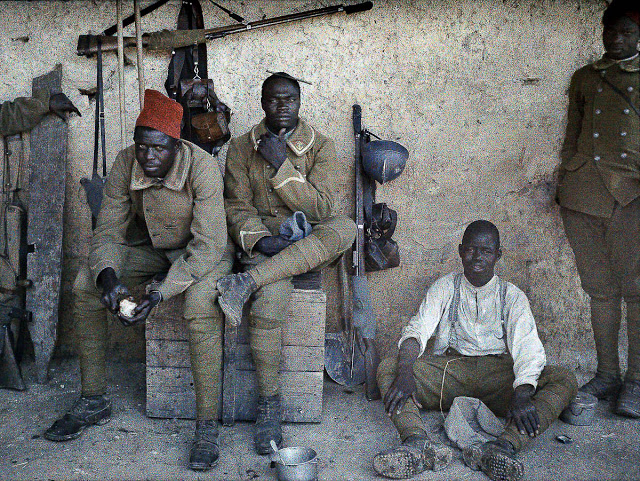
Senegalese soldiers serving in the French Army as infantrymen are resting in a room with guns and equipment next to them. 16th June 1917. Saint-Ulrich, Department Haut-Rhin, Region Alsace. Western Front. World War I. Autochrome LumiËre. Photo: Paul Castelnau (1880-1944). France (Photo by Galerie Bilderwelt/Getty Images)
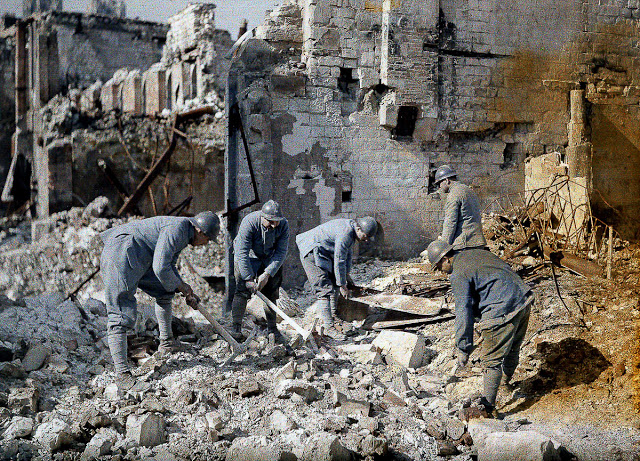
Five French soldiers are clearing the rubble in the ruins of Reims, which was destroyed almost 60 per cent by German artillery and air raids during World War I. 1917. Color photo (Autochrome Lumière) by Fernand Cuville (1887-1927). Western Front. Reims, France. (Photo by Galerie Bilderwelt/Getty Images)
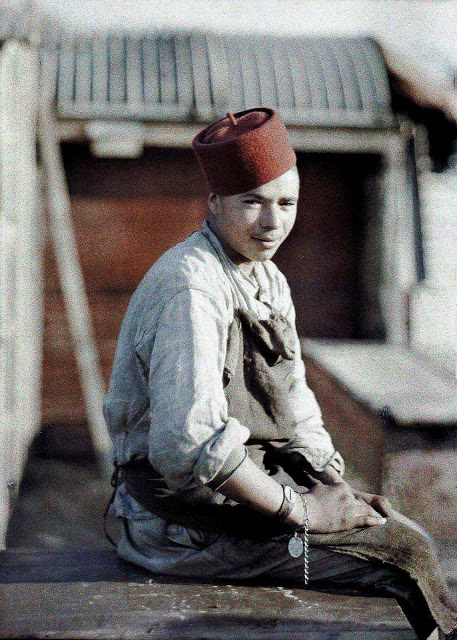

French fire fighters, military and civilians are trying to prevent fires from spreading after the bombings of September 2 and 3, which affected several buildings in Dunkirk including the warehouse Bains shown in the photo. 3rd September 1917. Region Nord-Pas-de-Calais. Western Front. World War I. Autochrome LumiËre. Photo: Paul Castelnau (1880-1944). France. (Photo by Galerie Bilderwelt/Getty Images)
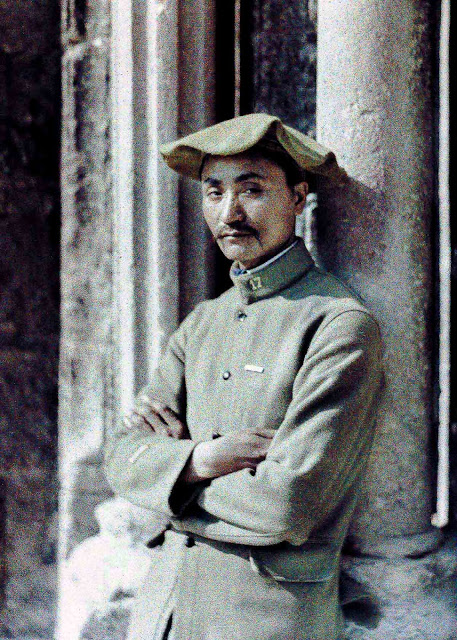
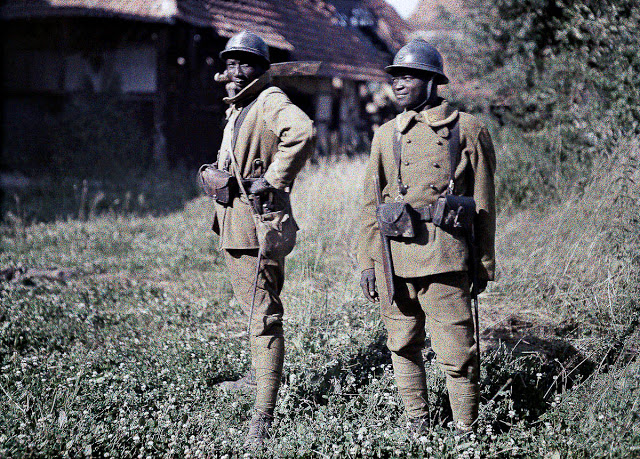
Two Senegalese soldiers serving in the French Army as infantrymen. 22nd June 1917. They are Bambara (Bamana or Banmana), a MandÈ people living in west Africa. Balschwiller, Department Haut-Rhin, Region Alsace. Western Front. World War I. Autochrome LumiËre. Photo: Paul Castelnau (1880-1944). France. (Photo by Galerie Bilderwelt/Getty Images)
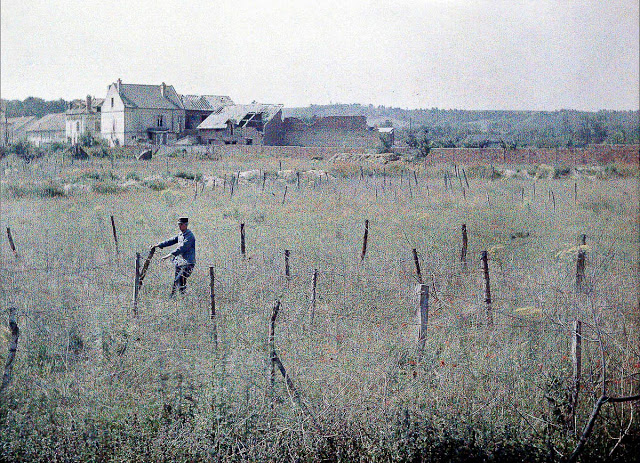
A French officer inspects the barbed wire around French positions. 1917. Color photo (Autochrome Lumière) by Fernand Cuville (1887-1927). Soissons was taken over by German troops twice during World War I and was heavily damaged by artillery fire. Soissons, Aisne, France. (Photo by Galerie Bilderwelt/Getty Images)
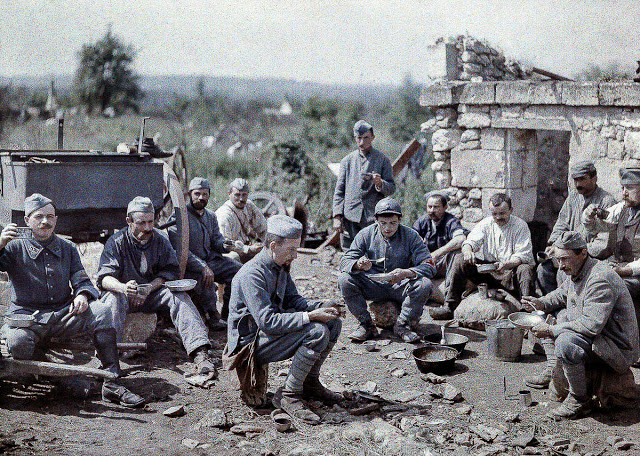
French soldiers of the 370th Infantry Regiment are eating soup during the battle of the Aisne, Western Front, World War I. 1917. Color photo (Autochrome Lumière) by Fernand Cuville (1887-1927). Aisne, France. (Photo by Galerie Bilderwelt/Getty Images)
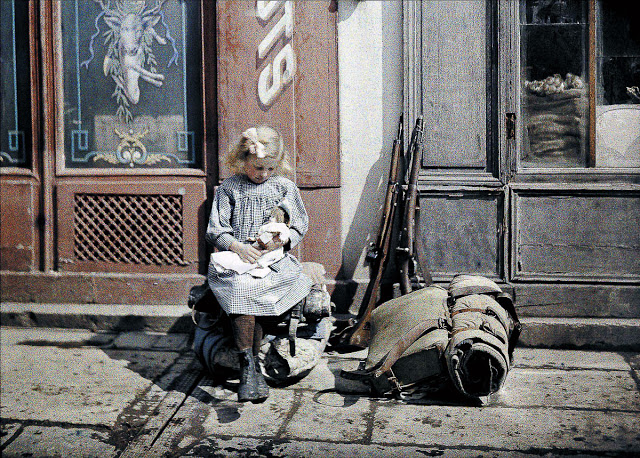
A little girl is playing with her doll. 1917. Color photo (Autochrome Lumière) by Fernand Cuville (1887-1927). Two guns and a knapsack are next to her on the ground. World War I, Western Front. Reims, Marne, France. (Photo by Galerie Bilderwelt/Getty Images)
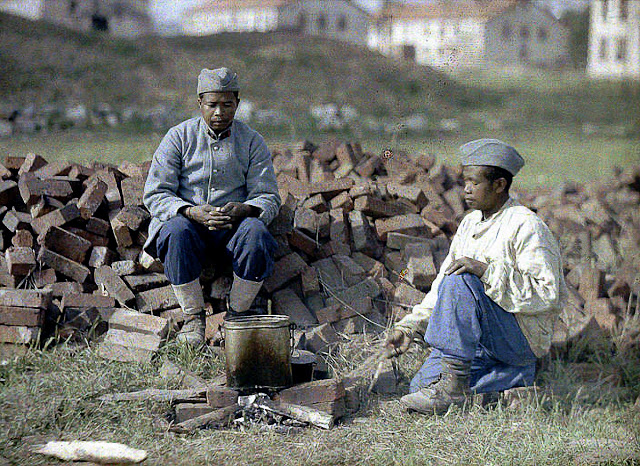
Two French soldiers from Africa are heating up a meal on an outdoor fireplace made from brick. World War I, Western Front. 1917. Color photo (Autochrome LumiËre) by Fernand Cuville (1887-1927). Soissons, Aisne, France. (Photo by Galerie Bilderwelt/Getty Images)
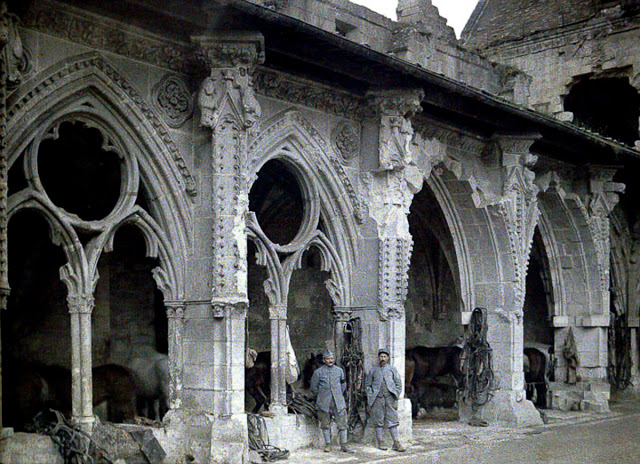
Two French soldiers and horses in the cloister of the abbey de Saint-Jean-des-Vignes, which was heavily damaged by artillery fire. 1917. Color photo (Autochrome LumiËre) by Fernand Cuville (1887-1927). World War I, Western Front. Soissons, Aisne, France. (Photo by Galerie Bilderwelt/Getty Images)

Two French soldiers are standing at a narrow gauge railroad track near the French line at Het Sas in an area that has been devastated by artillery fire. 10th September 1917. The battle ground is near the village of Boezinge, north of the city of Ypres in West Flanders. Western Front. World War I. Autochrome LumiËre. Photo: Paul Castelnau (1880-1944). Belgium.†(Photo by Galerie Bilderwelt/Getty Images)
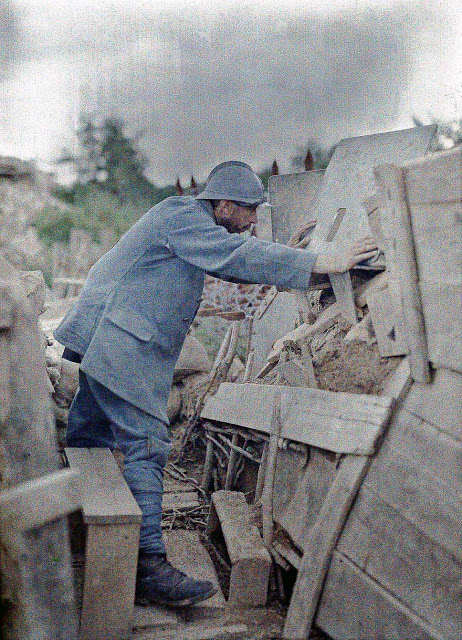

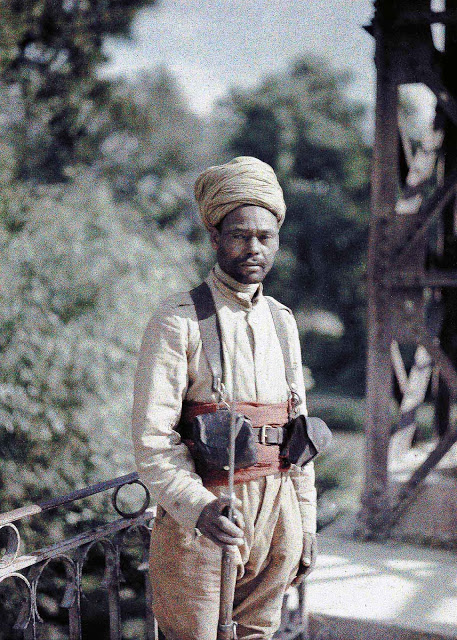
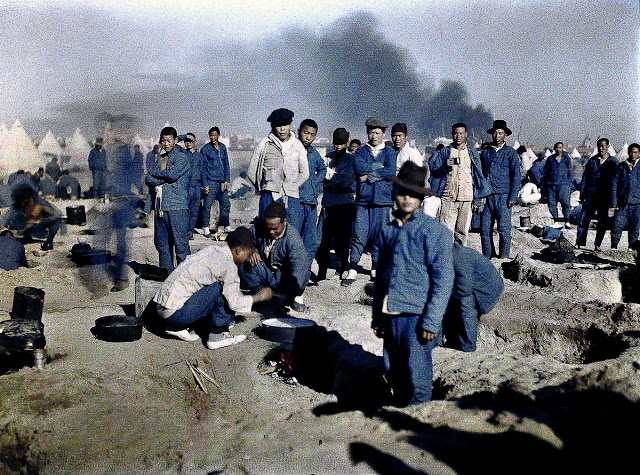
A camp of workers from the British Chinese Labour Corps recruited to participate in the Middle East campaign, which began in 1916 with the defense of the Suez Canal and the allied reconquest of the Sinai peninsula. 1917. These workers carried out work to support the frontline troops, such as building dugouts and repairing roads during World War I. Autochrome LumiËre. Photo: Paul Castelnau (1880-1944). Egypt.†(Photo by Galerie Bilderwelt/Getty Images)

A group of Senegalese soldiers serving in the French Army as infantrymen is having lunch in Saint-Ulrich, Department Haut-Rhin, Region Alsace. 16th June 1917. Western Front. World War I. Autochrome LumiËre. Photo: Paul Castelnau (1880-1944). France. (Photo by Galerie Bilderwelt/Getty Images)

A French observation post with three soldiers in a trench reinforced with wooden beams and sand bags close to the German lines. 16th June 1917. Hirtzbach, Department Haut-Rhin, Region Alsace. Western Front. World War I. Autochrome LumiËre. Photo: Paul Castelnau (1880-1944). France. (Photo by Galerie Bilderwelt/Getty Images)France June 16, 1917Autochrome LumiËrePhoto: Paul Castelnau (1880 -1944)
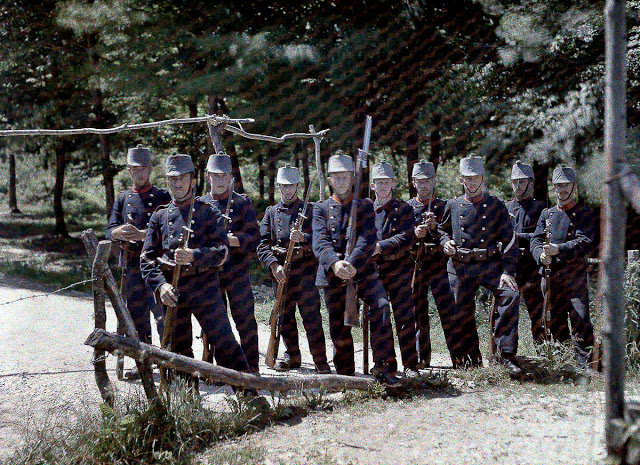
A group of Swiss border guards behind a fence between Switzerland and France, Department Haut-Rhin, Region Alsace. 19th June 1917. Western Front. World War I. Autochrome LumiËre. Photo: Paul Castelnau (1880-1944). France. (Photo by Galerie Bilderwelt/Getty Images)
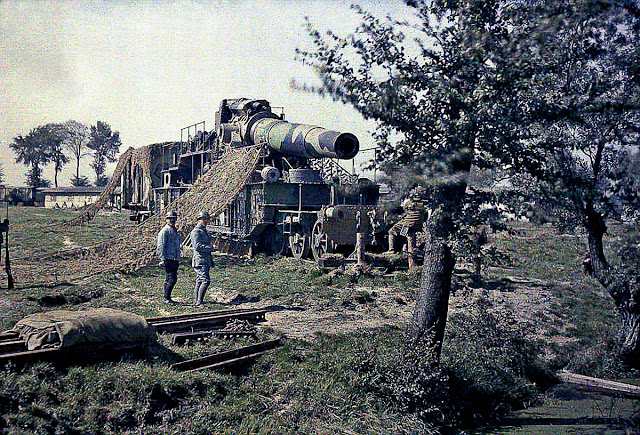
French soldiers are camouflaging a 370 mm railway gun with the inscription ìKeityî. 5th September 1917. Noyon, Region Oise. Western Front. World War I. Autochrome LumiËre. Photo: Paul Castelnau (1880-1944). France. (Photo by Galerie Bilderwelt/Getty Images)
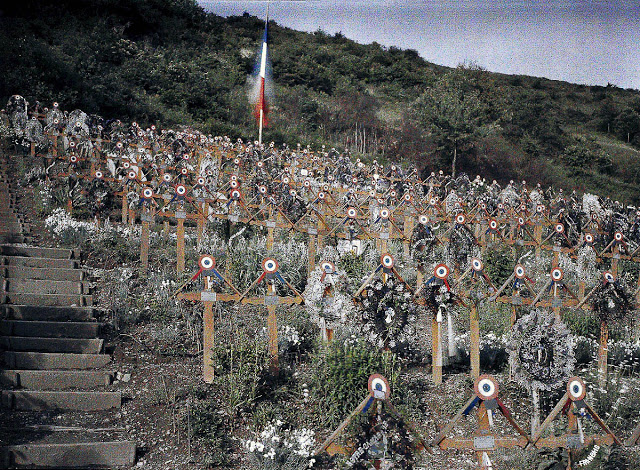
A military cemetary on a hillside in the town of Moosch in Alsace containing graves of the ìBlue Devilsî of the Chasseurs Alpins and some infanterists of the 152nd Infantry Regiment as well as some Chasseurs ‡ Pied. 1917. A French flag has been set up. Western Front. World War I. Autochrome LumiËre. Photo: Paul Castelnau (1880-1944). France.†(Photo by Galerie Bilderwelt/Getty Images)
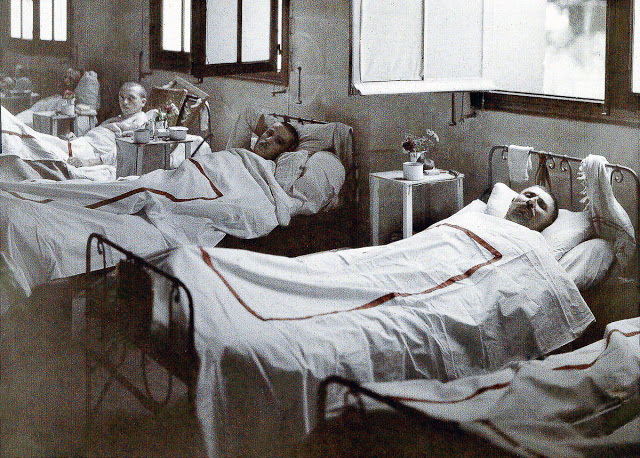
Wounded soldiers from the battlefield near Laffaux at Saint-Paul Hospital during World War I, Western Front. 1917. Color photo (Autochrome Lumière) by Fernand Cuville (1887-1927). Soissons, Aisne, France. (Photo by Galerie Bilderwelt/Getty Images)
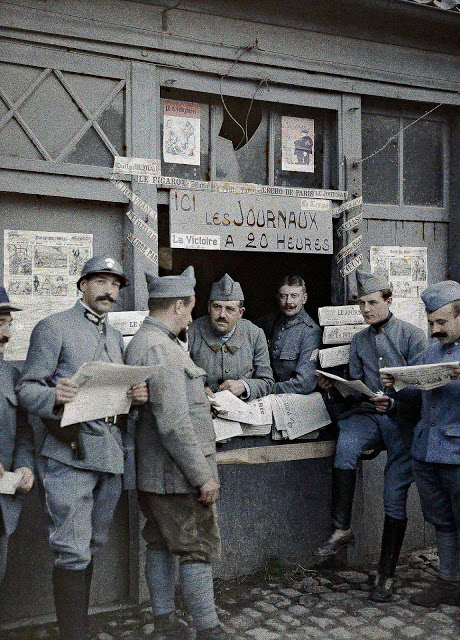
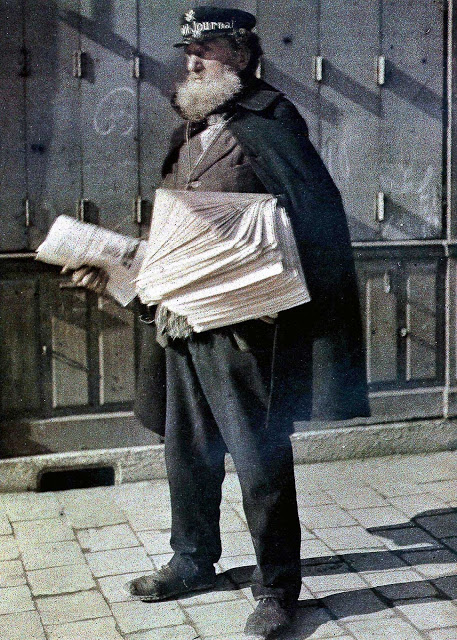
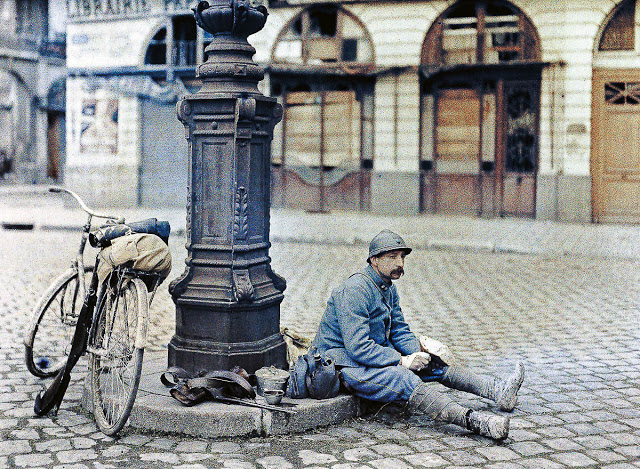
Lunch of a French soldier in front of a damaged library. 1st April 1917. He is sitting at a lamp post in a square in Reims with his bicycle next to him. Western Front. World War I. Autochrome LumiËre. Photo: Paul Castelnau (1880-1944). France. †(Photo by Galerie Bilderwelt/Getty Images)




